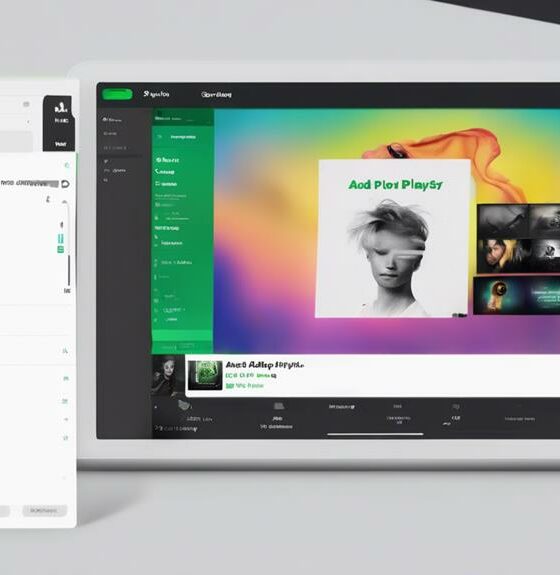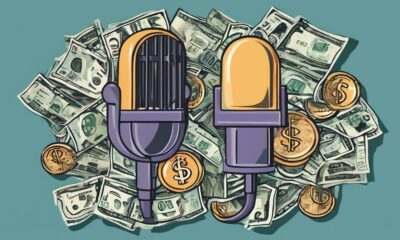Ableton
Loop 2020 by Ableton

As Loop draws closer, Ableton wanted to let you know about some of the events and formats Ableton is particularly excited about. Coming back to Berlin in 2020, Loop is three days of talks, performances and hands-on workshops aimed at sharing ideas on music, technology, and creative practice. Bringing together artists, technologists, educators, and other creative thinkers, Loop is an exploration of what it is to make music today and what it could be tomorrow.

Loop: April 24-26 2020, Silent Green, Berlin
Loop 2020’s primary location is a new cultural venue with unique historical significance. Located in Wedding, Silent Green is on the grounds of Berlin’s first crematorium. Built between 1909 and 1910, the historically protected building encompasses multiple spaces now dedicated to artistic and cultural thinking, research and experimentation. These spaces include the octagonal Cupola – an atmospheric concert venue which was once the mourning hall, and the modern Underground Hall – formerly a subterranean mortuary, which now serves as a space for cross-media exhibitions. Events will also take place in Ebensperger Rhomberg and Luxoom Lab along with Savvy Contemporary, all located within the Silent Green grounds.
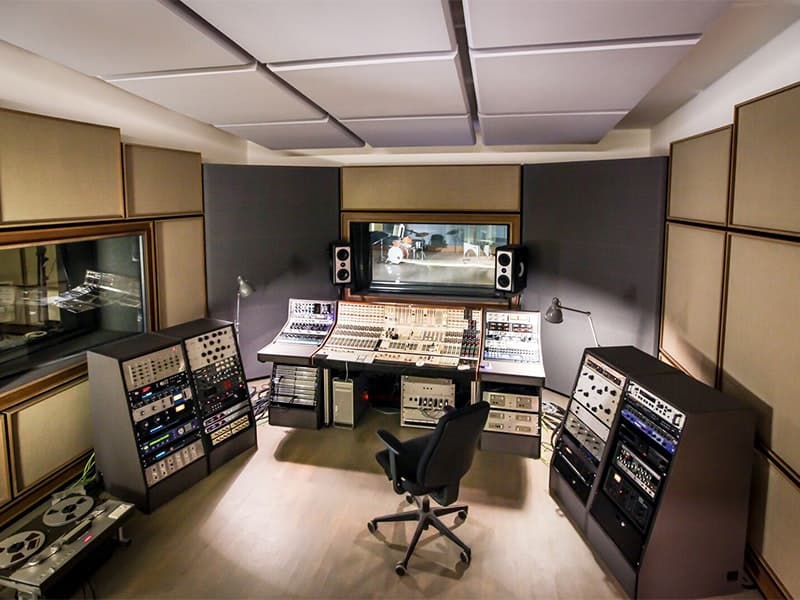
In addition to this, selected events will be taking place at Bonello Studios. Founded in 2016, Bonello Studios serves as a base for creatives working in the fields of film music, sound design, electronic music, art and multimedia.

The venues are both located in Wedding, within walking distance of each other.
On Stage at Loop
On the main stage, multi-platinum hip hop producer Major Seven and avant-garde techno DJ and producer Camea will each host a Track Deconstruction. Their explorations into the inner workings of a track will be hosted by Tracklib and Splice, respectively.
Award-winning sound-artist and multi-disciplinary designer Yuri Suzuki will give a talk to show the intricate sound design at the heart of his exquisitely crafted pieces. The talk will be presented by Shure.
Online AI-powered mastering service LANDR will join a discussion about machine learning’s role in the future of music production, and Cycling ’74 will show us how to create real-time sound reactive visuals using Max for Live.
Group Sessions and Installations
Korean finger-drummer Lionclad will team up with teaching app Melodics in an intimate Studio Session demonstrating how she prepares samples for her virtuoso live hip hop performances.
In an interactive installation by Spitfire Audio, attendees will be invited to record sounds for a new library made up of audio captured at Loop. The processed sounds will be combined into a downloadable instrument for the free LABS plugin.
There will be more events and formats added in the coming weeks. For the full rundown check the Program page of the Loop website.
Ableton
The Most Used Ableton Stock Effects: How to Create Professional sounding Mixes with Just the Built-In Plugins
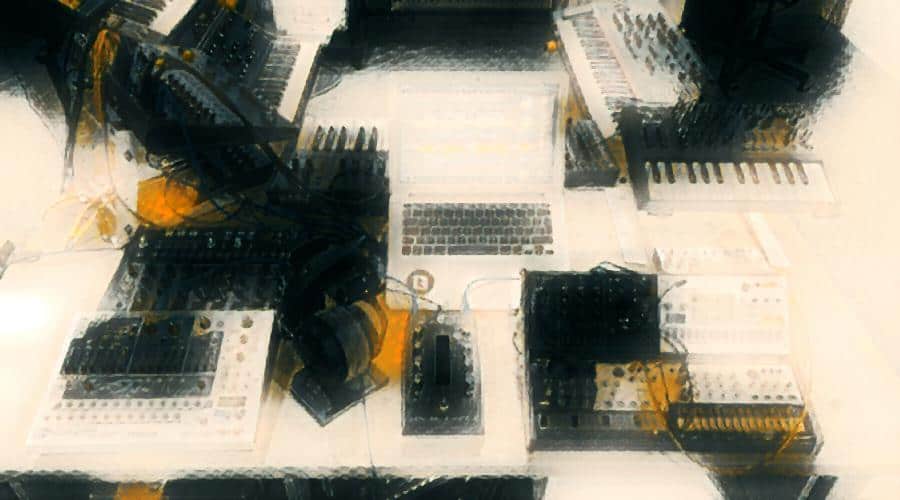
The Most Used Ableton Stock Effects
Ableton is a powerful music production software used by many top DJs and producers to create amazing-sounding mixes. For years, Ableton Live has been the go-to Digital Audio Workstation (or DAW) for many music producers, DJs, and touring musicians. Over time, Ableton has gained a lot of popularity among new artists and sound designers.
One of the wonderful specialties about Ableton is that it comes with a lot of built-in plugins that you can use to create professional-sounding mixes. In this blog post, we will take a look at some of the most used Ableton stock effects and show you how to use them to create awesome sounding mixes!
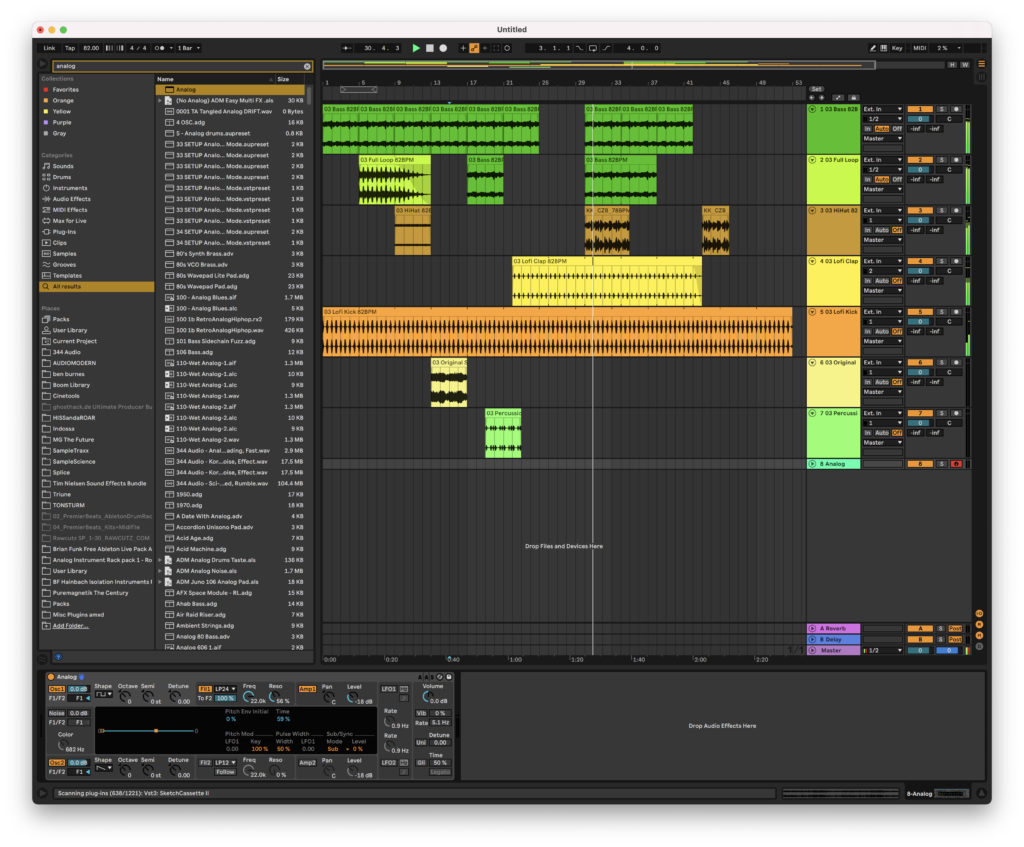
Are Ableton Stock Effects Good?
Ableton may be configured to create high-quality music in a number of ways. It includes premium quality stock plugins, which are essential for any producer.
At StrongMocha, we create music production and sound design for a variety of applications. Recently, we were working to create an album of ambient music.
We decided to use Ableton as our DAW because it has so many different options for creating these types of sounds and it also comes with some great plugins that can be used very effectively when making ambient music.
Best Ableton Live Stock Plugins
Ableton Live comes with a variety of built-in plugins that can be used for a variety of tasks. Some of these plugins are more CPU-friendly than their third-party counterparts, making them a better choice for certain tasks.
Additionally, the plugins are optimized to run inside of Ableton, which can be helpful for those who are not as familiar with plugin settings and configurations. Finally, some of Ableton’s effects are rather simple to use, and I always recommend people start on them before moving on to the third-party plugin replica where things might become a little too complicated and you risk developing choice paralysis not knowing what to move.
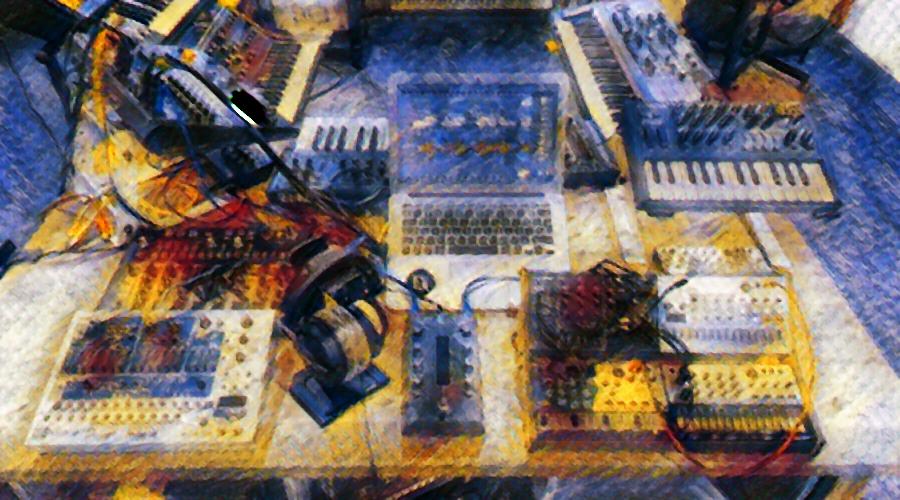
Ableton Saturator
The Ableton Saturator is likely to be the next stock effect that I employ the most. And for good reason: when you’re looking to beef things up, you can’t go raw with saturating them. Instead of EQing in a saturated style, it’s very simple to use, although you may also employ it in a complex structure where you start to wave shape and tinker with these settings over here.
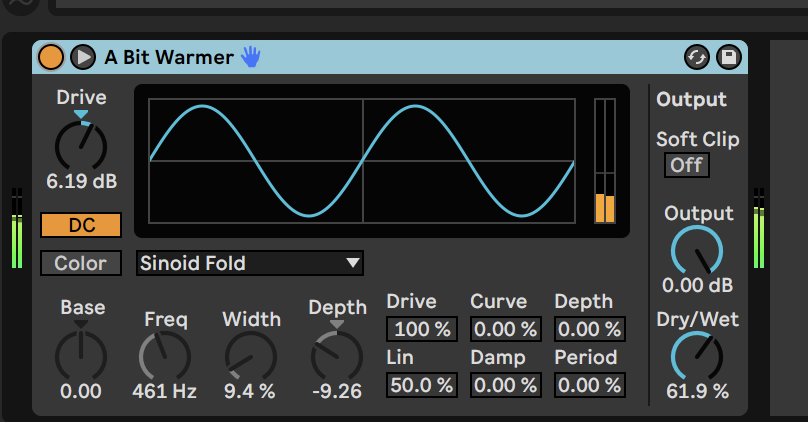
Many will use Saturator for some of the simpler curves and increase the effect of the Saturator. This can be a great way to add some extra power to your tracks and make them sound their best.
When it comes to saturation, it’s usually best to add just a touch in order to give the track some extra excitement. If you add too much saturation, you can easily create distortion, which will not sound very good. However, if you find the right balance, saturation can be a great way to make your tracks sound their best.
The Utility Effect
One of the most underutilized effects in Ableton Live is the utility effect, which will undoubtedly be one of the most useful for me for a few reasons. Although it only has a few knobs, it may be quite useful for certain activities.
If you have performed on Eurorack or Semi-Modular Synths you are familiar with the idea to use LSO to shape sound or effect. Now you get the idea of the Utility Effect. If you’ve ever been in a situation where you wished to automate the level of something inside Ableton, this might be helpful.
For example, you go to the master output of whatever instrument you’re using and perform something like this: it might be difficult to level this. With the utility effect, the instrument’s LFOs can be shaped. Setting the gain through Utility Effect may automate certain settings and parameters.
The Utility Effect can also drive the next effect on this list: Ableton Echo
Ableton Echo
The Ableton Live stock effect that I utilize in my tracks the most is the echo found within Ableton live. It’s simple to dial in the echo when I know what I want. So, for example, you have this lovely art music that doesn’t seem particularly exciting on its own. If I want to modify the delay, I can also alter it by using stock delay. We can also add a little of reverb if I want the delay to sound somewhat more ambient.
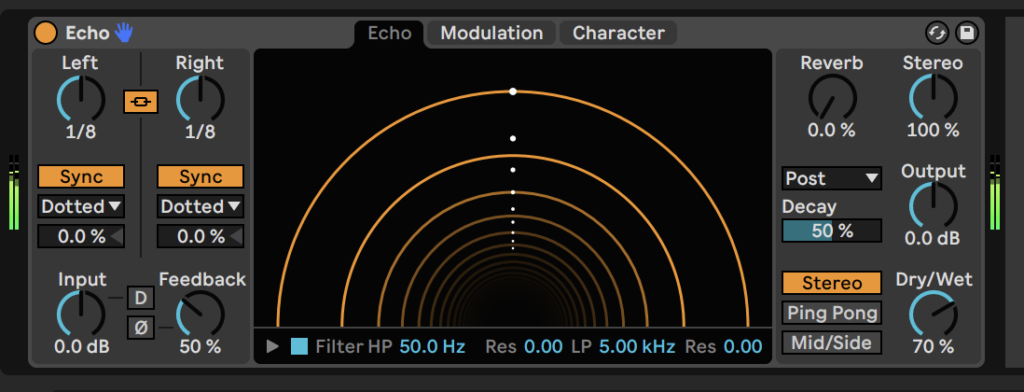
We can also get more complex with the echo. For example, we can add feedback and modulation to create some really cool sounding echoes. Additionally, we can use the filter to change the sound of the echo.
This can be really helpful for creating unique sounds and textures. Finally, we can use the delay time to change the timing of the echo. This can be great for creating interesting rhythms and grooves. The textures are there, we can adjust the timbre. Changing the filter is one of the simplest modifications to make that won’t ruin it.
You can also see how the delay becomes much more dynamic, full, and has a lot of motion when you combine it with live drums.
The atmospheric lofi effect is a particularly spooky way to make your song sound. If programmed, you may get this sort of strange lofi effect. Echo is a simple or complex procedure that involves either adding some similar character to a sound or generating echoes.
Auto Pan
The Auto Pan effect is great for creating a sense of movement in your track. By using the auto-pan effect, we can create a sense of movement in our track. This can be great for adding some extra flavor to our mix.
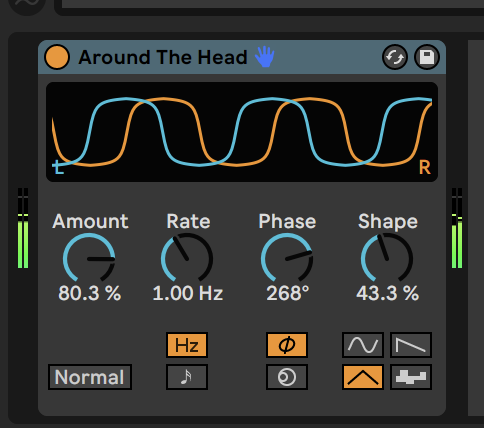
Create your own tremolo, a synchronized chopping effect, sidechain, or use the Envelope follower as an automated pan. Change the waveform to a sine wave, sawtooth, triangle, or pick it at random and control the amount, rate, phase, and shape of the signal.
By automating the panning of our track, we can create a sense of movement and motion. This can be great for creating a more dynamic mix.
Convolution Reverb
Another wonderful stock effect available in Ableton Live Suite is the Convolution Reverb. With this one, you’ll need the entire suite to access it. The algorithm is different because the same problem was solved by using a function of only two parameters instead of three.
Instead of creating its own computer-generated material to use as a basis for reverb tails and modes, as most convolution reverbs do, this one takes materials from popular music producers and processes them through various kinds of algorithms in order to create an immense variety of spaces and atmospheres.
The convolution reverb is a great way to add some really unique sounding reverbs to your track. By using samples from popular music producers, we can add some really cool sounding reverbs to our track. This can be great for adding depth and dimension to our mix.
Additionally, the convolution reverb is great for creating unique sounding atmospheres. By using different algorithms, we can create a variety of different sounding spaces and atmospheres. This can be great for adding some flavor to our mix. I use this effect the most on drums to add reverb to my beats.
Mono Mode
We also have a mono mode in Ableton. This is great for when you want to mix your track down and you only have one output. You can use this mode to make sure that everything is coming out of the one speaker.
This can be a great way to clean up your mix and make sure that everything is coming out of the one speaker. By turning on mono mode and selecting the frequency at which you want to split the signal, you can make sure that everything below that frequency is in mono.
We can mono a track or instrument by turning on mono mode and selecting the frequency at which we want to split the signal. This can be a great way to clean up our mix and make sure that everything is sounding its best.
The Glue Compressor
One of my and many others most utilized Ableton stock effects is the glue compressor. The Compressor, like the SSL console, is inspired by an old-fashioned eighties. Now you get the hint.
The glue compressor is great for gluing the sounds together. By compressing the sound. The glue compressor is great for automating the volume of your track.
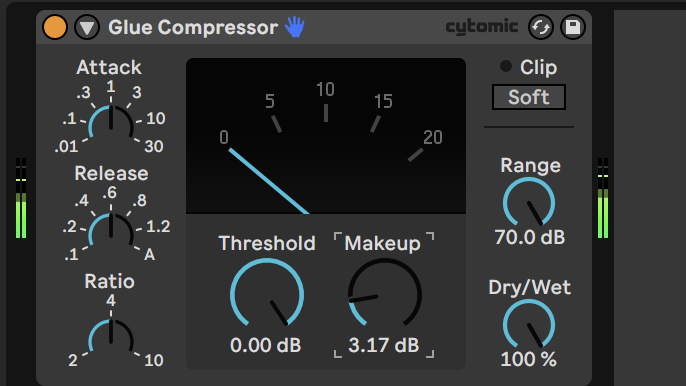
By compressing the sound, we can make sure that everything is sounding its best and that everything is coming through clearly. This can be great for creating a clean and polished mix. The bass is louder, more detailed, and more apparent in the mix. Everything feels a bit more glued together and it just fits in rather than sounding boring.
Ableton AMP
Ableton Amp is a guitar amplifier simulation effects plugin. It has a built-in cabinet emulator that allows you to emulate the sound of a guitar cabinet.
The Ableton Amp plugin is great for emulating the sound of a guitar cabinet. By using the cabinet emulator, we can create the sound of a guitar cabinet.
This can be great for adding some extra character to our guitar tracks. Guitar Pedals is an effect pedal bundle for guitarists, with 6 distinct effects: clean, boost, blues, rock, lead, heavy, and bass.
Every element of the signal, from gain to bass to middle to treble to presence to dry/wet balance, and mono/stereo output, can be controlled.
Frequency Shifter
The Ableton Frequency Shifter is great for shifting the frequency of your sound. By using the frequency shifter, we can create the sound of a guitar cabinet.
This can be great for adding some extra character to our guitar tracks. You can also add ring modulation to the incoming signal by moving up the spectrum. This plugin, which is based on an LFO, allows you to adjust the amount, rate, spin, and mix in one plugin.
Operator
FM synthesis, subtractive, and additive synthesis are all used in this synthesizer to create harsh leads, dirty percussions, and synthetic sounds.
As you can modulate the frequencies of all four oscillators with one another and alter each oscillator’s ADSR and waveform individually through its interface, you may create a wide range of sounds.
Analog
A detailed description of every phase of sound creation can be found in Analog. Create a waveform, run it through several filters, an AMP, LFO, and the core mixer, then add more noise to your sounds.

Sampler
Sampler takes sampling to the next level. Sampler is an Ableton device that converts any sample into an instrument. Sampler is a unique tool that will provide a different perspective on sampling sounds. Import each sound into the sampler and modify or add any additional characteristics to the sound.
In addition to the essentials (for example, shift, reverse, and pan), more advanced features like sample start and end, loop start and stop, crossfade, pitch/oscillator tab, filter tab, and modulation are included.
This gives you a plethora of methods to alter these samples that aren’t available in many third-party sampler plugins.
Wavetable
The Wavetable is a powerful synthesizer from Ableton that opens up a world of creative potential. The Wavetable gives you immediate feedback, so you can see what is happening.
By using the wavetable, we can shape the sound. This can be great for adding some extra character to our guitar tracks. The wavetable allows you to morph between two different waveforms and provides an easy way to preview the waveforms.
The wavetable is perfect for creating evolving pads, leads, and basses. You can also add a bit of grit to your sounds by using the Wavetable’s distortion.
EQ Eight
The EQ Eight plugin is great for mixing. You may set the EQ on up to eight bands, allowing you to customize the sound signal to your preferences.
It’s also really simple to use, unlike many Ableton stock plugins. I rely on it for nearly every track when I’m mixing inside Ableton.
Conclusion
Overall, Ableton Live comes with a variety of great stock plugins that can be used for a variety of tasks. Some of these plugins are more CPU-friendly than their third-party counterparts, making them a better choice for certain tasks. Additionally, the plugins are optimized to run inside of Ableton, which can be helpful for those who are not as familiar with plugin settings and configurations.
Finally, some of Ableton’s effects are rather simple to use, and I always recommend people start on them before moving on to the third-party plugin replica where things might become a little too complicated and you risk developing choice paralysis not knowing what to move.
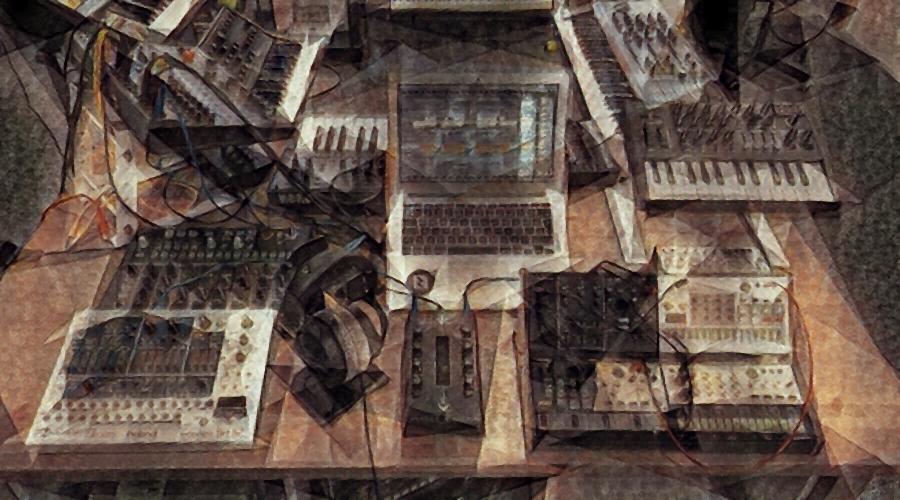
The content above provides a brief overview of some of the most commonly used stock effects in Ableton Live Suite. These effects can be great for adding depth and dimension to your mix, creating a sense of movement and motion, and adding flavor to your track. Additionally, the convolution reverb is great for creating unique sounding atmospheres.
The most commonly used Ableton stock effects are Ableton AMP, Frequency Shifter, Analog, and Operator. These plugins are great for adding character to your tracks and helping you to create professional-sounding mixes. The EQ Eight plugin is also great for mixing and is simple to use.
Ableton
Ableton Live 11.1 Update Adds Native Apple Silicon Support
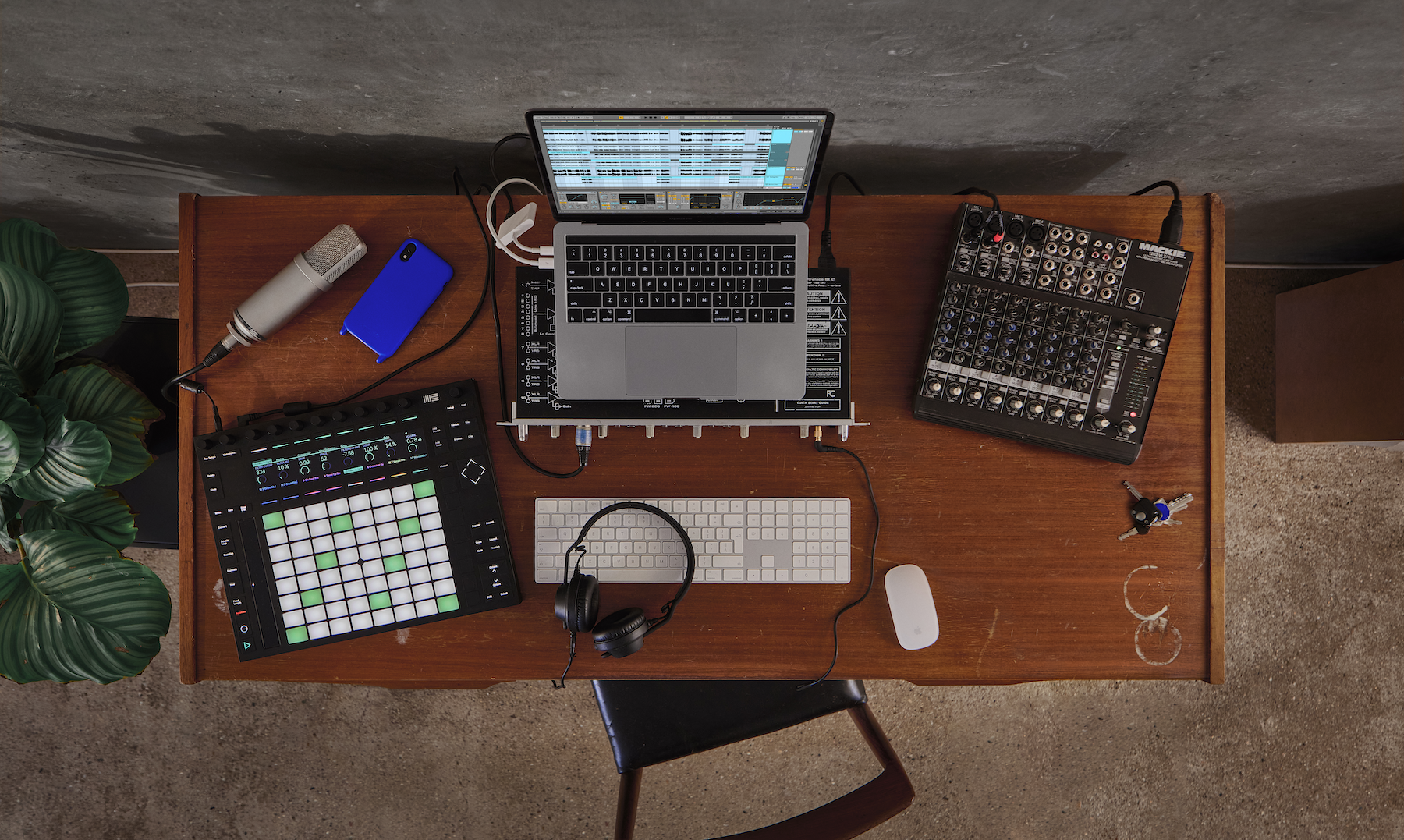
Ableton Live 11.1 is now available as a free update for all users. This update adds native support for Apple computers running on the M1 Silicon chip. The new version also includes several bug fixes and performance improvements.
Native Apple Silicon Support
This update adds native support for Apple computers running on the M-series processors. This is a great step forward for Ableton Live users, as it ensures that all users will have the same level of performance when using Live 11.x versions.
Ableton has also made some other improvements in this update. This new version also includes a few minor changes, such as an updated Shifter device that adds a new mode for real-time monophonic pitch shifting, as well as delay, an envelope section, an LFO, and glide.
Two new Max for Live tools, Align Delay and Shaper MIDI, are also introduced. Align Delay allows artists to account for delays when sending signals throughout their system. Shaper MIDI generates modulation information that may be used to add more expressiveness to MIDI music performances.
Arrangement View Improvements
The left arrow key may be used to go from an automation lane or take lane to the main track, which will also fold the lanes. You may also use the left arrow key to travel between tracks in a group and the Group Track.
Capture MIDI
The current loop’s first played note is considered the start of the loop if the detected loop is eight bars or less in the first recorded MIDI clip (in a set with the transport inactive).
When only one note is played in the first captured MIDI clip (in an empty set with the transport stopped), the loop boundaries are set to the note start and end, and the tempo is accordingly calculated, resulting in a one, two, four, or eight-bar loop. This is particularly useful when playing a rhythmical sample with a single MIDI note.
Comping
You may now duplicate selected take lanes using the keyboard shortcuts CMD + D (Mac) / CTRL + D (Win), or by right-clicking on the take lane header and selecting “Duplicate.”
A change in a take lane’s color affects the track’s main lane clip and vice versa. When the connection between other highlights on different clips changes, splits are generated on the new clips in some circumstances.
The colors of the clips in each take lane are congruent, and the horizontal lines that separate them are the same color.
When you right-click on a track or take lane and select Rename from the context menu, you’ll see an edit field.
Control Surfaces
You can now scroll between devices on a selected track by pressing the navigation buttons down while navigating across devices.
Users should be aware that if an invalid CC, note, or channel value is specified in a UserConfiguration.txt file, the associated User Remote Script can still be loaded.
CPU Meter
The CPU meter drop-down menu now can be customized to display:
- both the Average or Current CPU usage levels
- only the Average level, with the Current level switched off
- only the Current level, with the Average level switched off
Interface
You may freely select a radio button with the arrow keys in Live. If you’re switching between radio buttons on an iPad inside a Rack using the left and right arrow keys, hit the ESC key after to return to moving between devices in the Rack with the left and right arrow keys.
The default state of the Monitor radio buttons in both Session and Arrangement View has been restored. To delete a Monitor, double-click its name. When the In/Out section is expanded, you may press the Delete key to reset the radio buttons to their defaults (for audio tracks, “Off” and for MIDI tracks, “Auto”). To access the above, go to Edit > Return to Default.
Multi-Clip Editing
New editing options, including voice detection and note selection, have been added to multi-clip editing:
- Time in the MIDI Note Editor can be selected across loop and clip boundaries.
- Note editing (e.g. copy, cut, paste, delete) can be used when working with note selections across clips and loop boundaries.
- Notes can be cut or copied from multiple clips and inserted into the same set of clips, as long as the clip selection/foreground clip has not changed, or into a different clip once that new clip has been selected.
New Devices and Device Improvements
- A new audio effect, “Shifter,” was introduced in Live Standard and Suite. Shifter is a plug-in that applies pitch shifting, frequency modification, and ring modulation to audio. The Coarse and Fine parameters, along with a Tone filter and Window parameter, allow you to modify the pitch or frequency of incoming audio. There are additional modulation tools in the LFO, Delay, and Envelope Followers sections. By using its own settings or incoming MIDI messages, the Shifter gadget may alter pitch or frequency.
- Max for Live has introduced the Align Delay device, which is now available as part of the Max for Live package with a Suite license or a Standard plus Max for Live subscription. Max for Live’s Align Delay is a device that delays incoming signals by samples, milliseconds, or meters/feet.
- Max for Live now includes the Shaper MIDI device, which is accessible from within a Suite or Standard plus Max for Live license. Shaper MIDI is a Max for Live MIDI device that creates mappable modulation data using multi-breakpoint envelopes.
- The Cytomic Filters, which are found in the Wavetable, Echo, Simpler, Sampler, Operator, and Auto Filter devices, have been improved in terms of stability, sound quality, and performance. Cytomic filters (particularly the MS2 and SMP choices) may break in sound compared to earlier Live versions, especially when pushed hard.
- The Amp and Cabinet audio effects of the Softtube libraries may change gradually in sound.
- Gain controls in the Sampler, Wavetable, Impulse, Simpler, Channel EQ, Hybrid Reverb, Chorus-Ensemble, Phaser-Flanger (Phaser-Flanger), Echo (output knob only), Spectral Resonator (input send only) devices now increment/decrement consistently by 1 dB when pressing the
The most notable changes are the large improvements to comping and Clip handling. Other enhancements include enhanced comping tools, updates to clip management, and more. For a full list of what’s new, read the release notes.
Live 11.1 is now available. If you own a Live 11 license, download Live 11.1 from your account page. Live 11.1 is free for all owners of Live 11.
About Ableton
Ableton makes products for music makers to create, produce and perform music. These include Live, a software that combines traditional studio technologies with the freedom of working without a timeline; Push, a hardware instrument for hands-on playing and composing with Live; and Link, a technology that allows multiple devices to play in time together over a wireless connection.
Ableton was founded in 1999 by musicians in need of new creative tools. The first version of Live was released in 2001. Its founders led the company from its headquarters in Berlin and has additional offices in Los Angeles and Tokyo. About 530 people work at Ableton across the world.
Ableton live
Free Sample Library: Box Harp (DecentSampler, Ableton Live, Kontakt, SFZ, EXS)

Box Harp – Free Sample Library
Free Sample Library: Box Harp (DecentSampler, Ableton Live, Kontakt, SFZ, EXS)
-
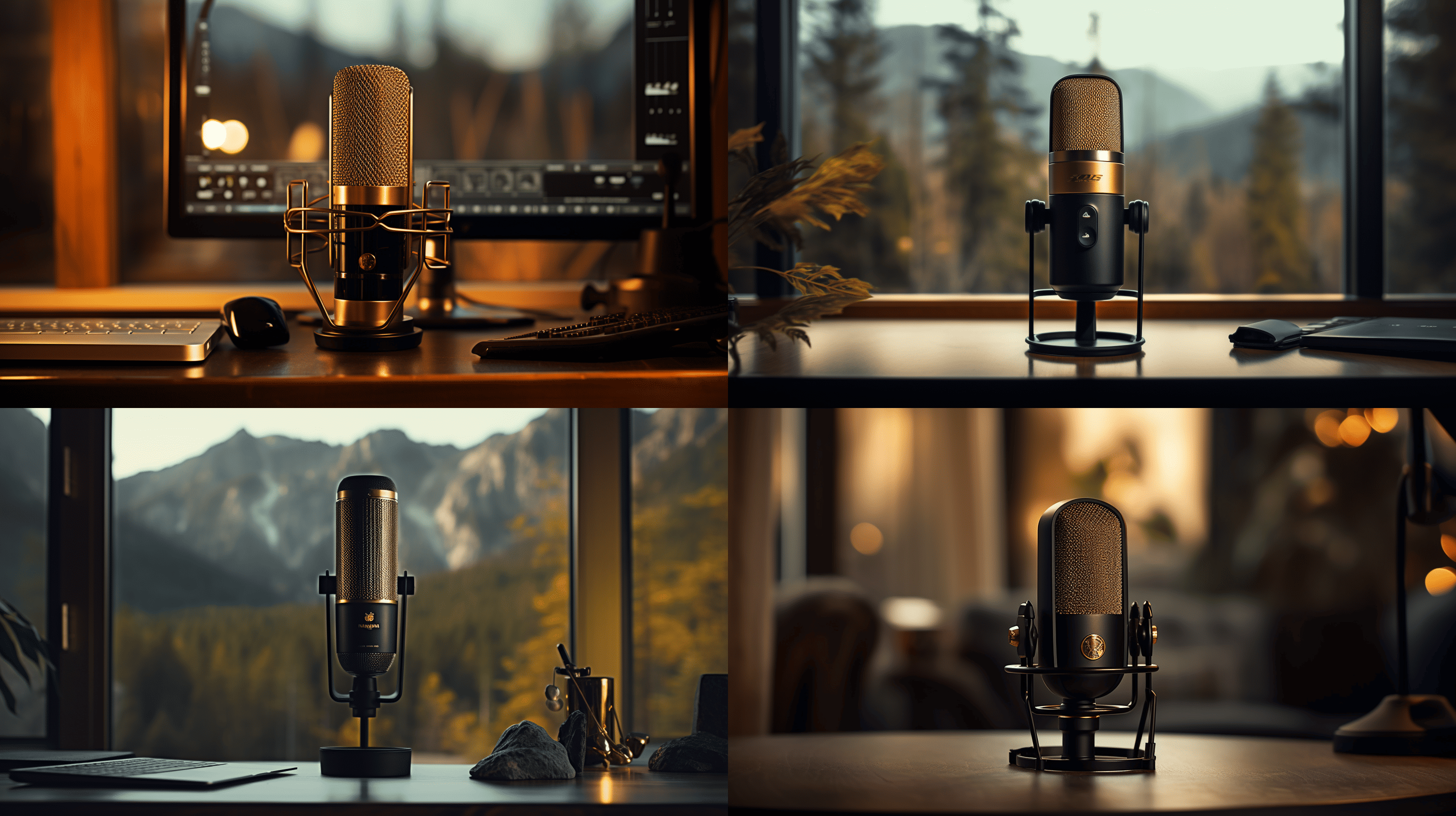
 Microphone19 hours ago
Microphone19 hours agoUnleash Your Inner Podcaster: Discover the Best Microphone for Crisp, Clear Audio
-

 Music Theory4 days ago
Music Theory4 days agoUnlocking Nature’s Harmony: The Power of 432 Hz Frequency in Sound & Music for Enhanced Living and Well-Being
-

 Sound Design1 week ago
Sound Design1 week agoWhat Is the Difference Between a Sound Engineer and A Sound Designer?
-

 Native Instruments Kontakt4 days ago
Native Instruments Kontakt4 days agoVOCAL AI – Animated Intelligence: The Ultimate Vocal Playground
-

 Sound Design1 week ago
Sound Design1 week agoWhy Sound Engineer
-

 Composing2 days ago
Composing2 days agoMUTILATED NOISE by SampleTraxx: The Next Generation Sound Collection
-

 Vetted3 months ago
Vetted3 months ago11 Best Gore Websites to Explore the Darker Side of the Internet
-

 Expert Guides3 months ago
Expert Guides3 months agoOptimize Your Space with Room Acoustic Treatment






